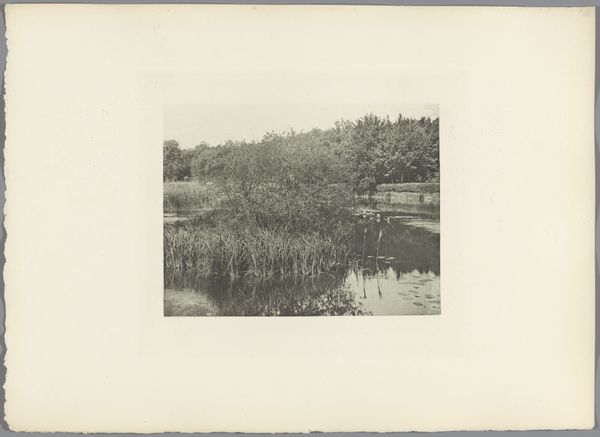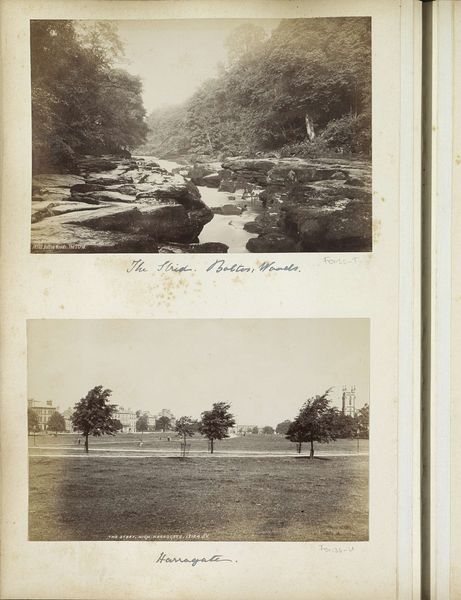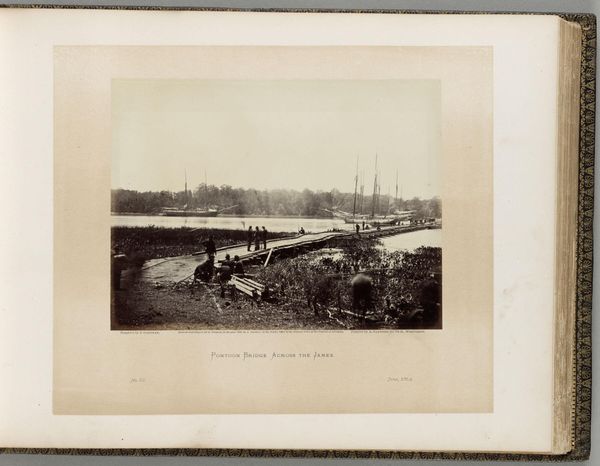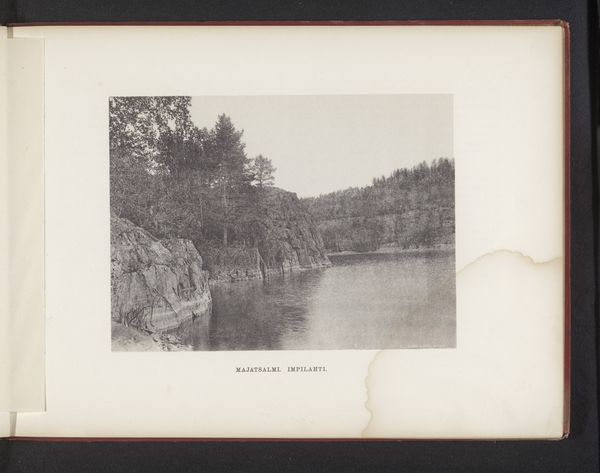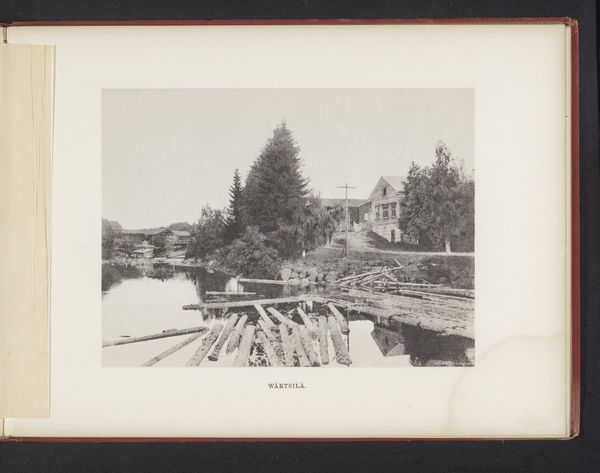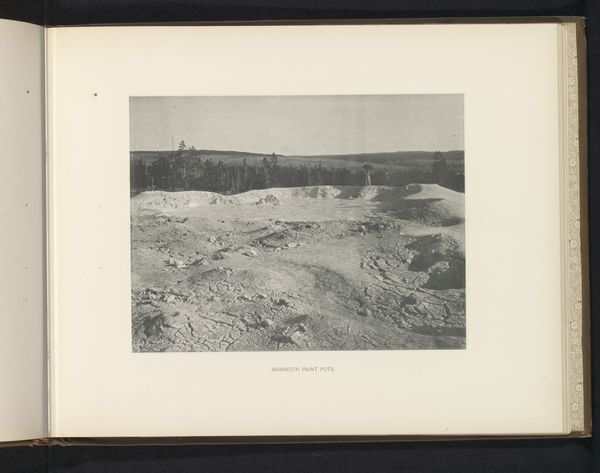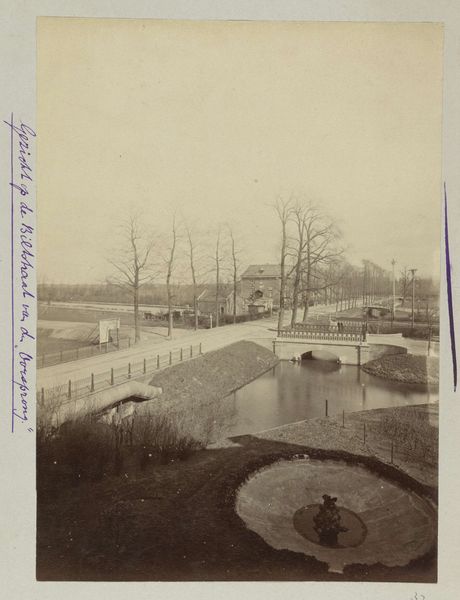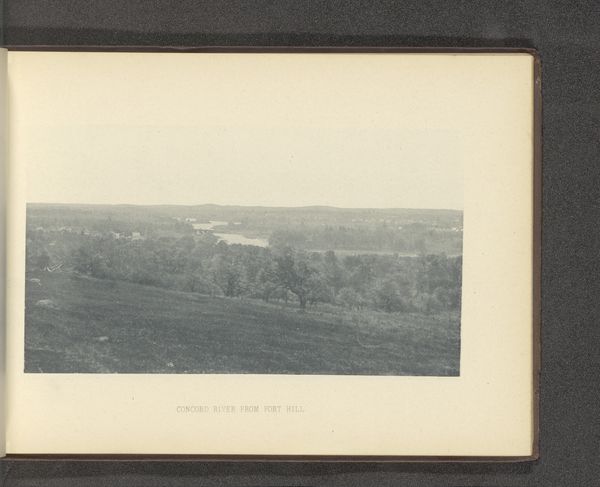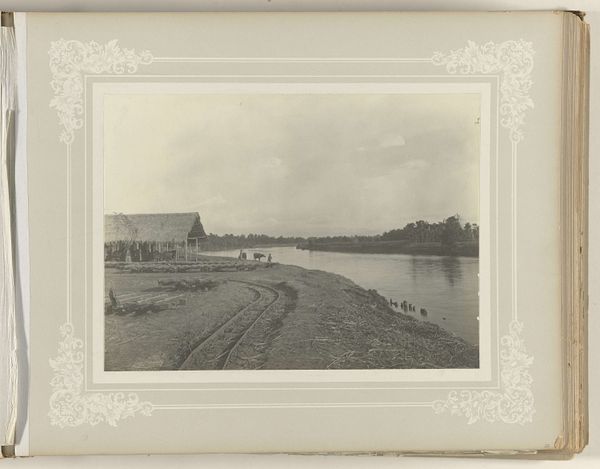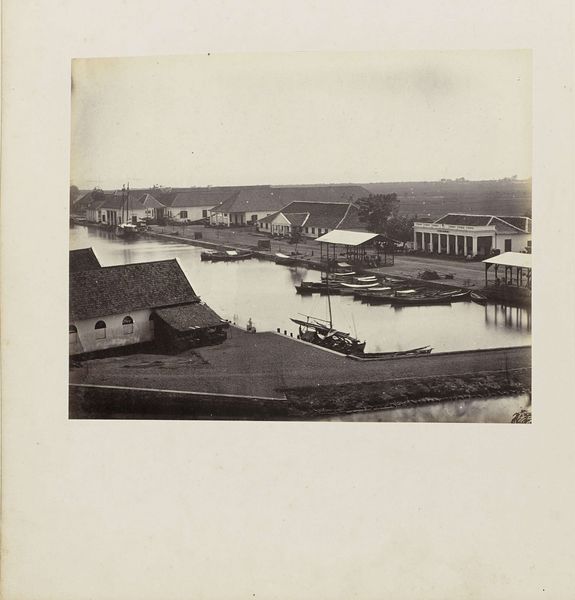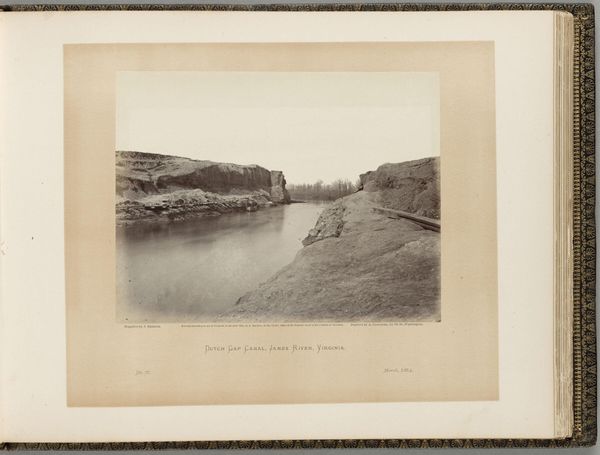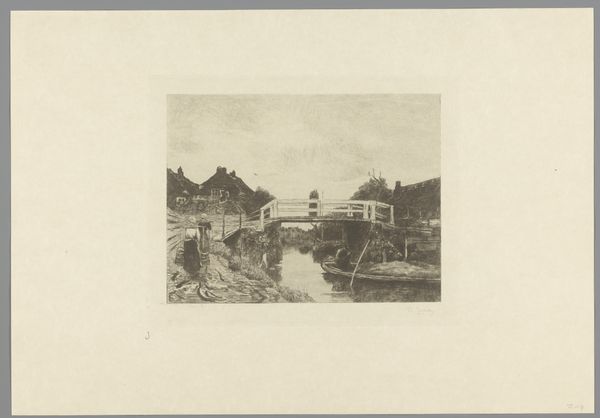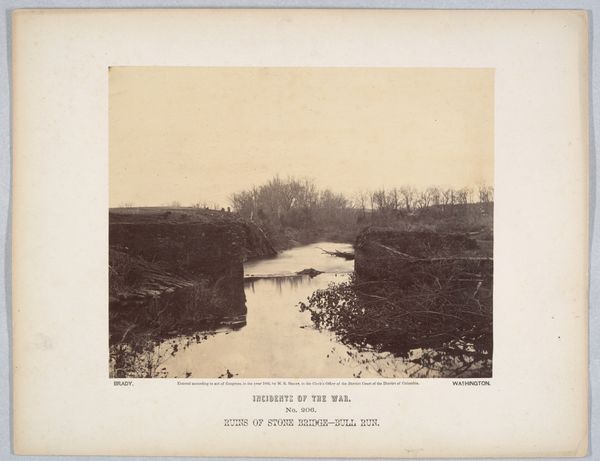
Stoomsleepboot 'Koba' met vier laadbakken te Pangkalpinang c. 1900 - 1920
0:00
0:00
photography, gelatin-silver-print
#
landscape
#
archive photography
#
photography
#
gelatin-silver-print
Dimensions: height 239 mm, width 285 mm
Copyright: Rijks Museum: Open Domain
Curator: Looking at this image, I’m struck by its stark contrast between the industrial and natural elements. It's quite somber, actually. Editor: That's a compelling read. What we have here is a gelatin-silver print, taken sometime between 1900 and 1920. The Rijksmuseum holds it in its collection, identifying it as "Stoomsleepboot 'Koba' met vier laadbakken te Pangkalpinang," meaning Steam Tug 'Koba' with four barges at Pangkalpinang. It's a seemingly straightforward depiction of river transport. Curator: Right. And the "straightforward depiction" speaks volumes. Note how the massive piles of what looks like rock are dwarfing the workers on the barges; I'm curious about the process by which such material was extracted and moved using those steam-powered barges. Editor: Absolutely. This photograph exists because of extraction. Pangkalpinang was and still is a major tin-mining area, which speaks to the exploitative industry and, presumably, local or indentured labor at the time. The seemingly banal subject becomes loaded with socio-political significance. Curator: It's hard not to see it as such. Think about the carbon emitted by that steam tug and those factories at a time when there was no pollution regulation and imagine the effect it had on the Indigenous populations. Also, notice how close they position the piles of stone next to the waterways? Editor: Exactly, it gives us clues about production techniques and regulations. These archival photos serve as important reminders about historical global commerce but we also need to reflect on its social costs and human exploitation involved. Curator: Perhaps that somber mood I felt was the image communicating that violence to me through its texture and light, those piles of rock speak of extracted resources, displaced lands and an imbalanced dynamic. Editor: In this seemingly placid river scene, so much is not present in the photograph, the exploitation of workers, Indigenous resistance and massive changes on the natural landscape of this place. Thank you for these astute observations on how this medium, silver gelatin printing helps in uncovering these hidden narratives. Curator: My pleasure, your understanding of colonialism in art opened new pathways into the history this object holds.
Comments
No comments
Be the first to comment and join the conversation on the ultimate creative platform.

